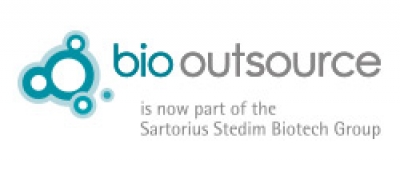Demonstrating fingerprint-like similarity
The biggest challenges in developing a biosimilar monoclonal antibody is to comprehensively characterise the biosimilar and demonstrate comparability to the innovator. The complex nature of monoclonal antibodies frequently results in differences between batches of the innovator and between the biosimilar and innovator. The key to regulatory acceptance is to understand these differences in relation to the clinical significance, and regulators advocate generating extensive analytical characterisation data to present a “totality of evidence†in regulatory submissions. A key factor of this is understanding the functional significance of structural differences between molecules.
This webinar explores the impact of differing glycan structures on antibody function using a case study comparing biosimilar infliximab to the innovator molecule, Remicade®. Drawing on real life examples throughout, the presenters will discuss a variety of orthogonal methods including detailed glycan analysis by LC-MS, CD16a and SPR binding, and ADCC activity. This data will be used to reflect on how the structural characteristics of the antibody translate into functional activity. Correlations between orthogonal methods will be discussed, and an overview provided of how in-depth characterisation of the structure/function relationship can be used to provide a comprehensive understanding of residual differences between biosimilar and innovator molecules.
The webinar will highlight the benefits of carrying out combined structural and functional analysis and the positive impact on the cost of biosimilar development. Consideration will also be given to the importance of choosing appropriate analytical assays at each stage of the product’s development to rapidly select the best clones and processes to reach the clinic faster.
This is a truly innovative analytical approach to assessing similarity between biosimilar and innovator molecules, providing biosimilar developers with a comprehensive testing package that aims to provide a totality of evidence fit for regulatory submissions. Register today and learn how Sartorius Stedim BioOutsource’s unique, combined structural and functional analysis can resolve your characterisation and comparability challenges.
Presented by

Martin De Cecco, PhD,
Senior Scientist
Martin joined BioOutsource as a Senior Scientist in 2015. Previously, Martin spent 5 years developing applications for biopharmaceutical analysis at a leading LC/MS vendor. He gained his PhD in 2011 from the University of Edinburgh, where he used mass spectrometry to investigate structure-function relationships of antimicrobial peptides. In his current role at BioOutsource, he leads the development of new physicochemical methods for the structural characterisation of monoclonal antibodies.

Terry Gray, PhD,
Bioanalytical Field Marketing Specialist
Terry joined BioOutsource in 2013 following successful completion of a PhD in Oncology and Cell Signalling at Edinburgh Cancer Research Centre, University of Edinburgh. Specialising in protein science, protein-protein interactions and monoclonal antibodies, Terry focussed on the development, optimisation and validation of binding and functional assays to characterise biological drugs in his role as Technical Services Scientist. His current position as Bioanalytical Field Marketing Specialist builds on a rounded understanding of monoclonal antibodies, with an emphasis on understanding the relationship between biological activity and molecular structure. In addition, he currently provides technical support for our broad and expanding range of bioanalytical and physicochemical characterisation services.





